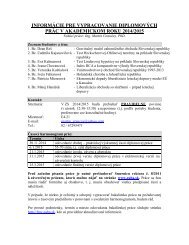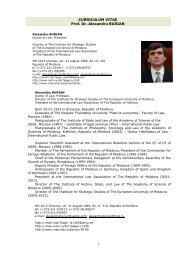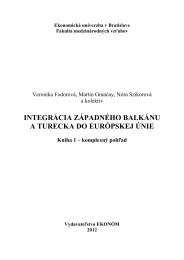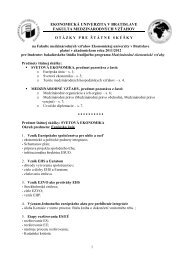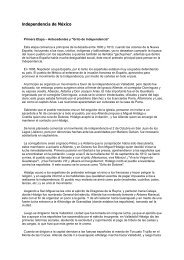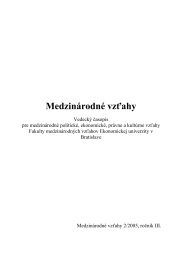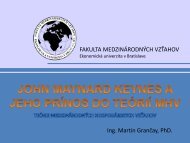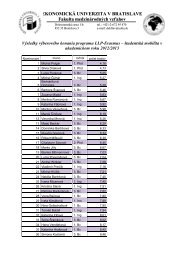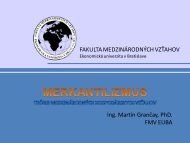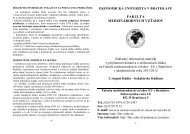rozvojová pomoc a spolupráca - Fakulta medzinárodných vzťahov
rozvojová pomoc a spolupráca - Fakulta medzinárodných vzťahov
rozvojová pomoc a spolupráca - Fakulta medzinárodných vzťahov
- No tags were found...
You also want an ePaper? Increase the reach of your titles
YUMPU automatically turns print PDFs into web optimized ePapers that Google loves.
In practice, it is often difficult to distinguish borders betweenhumanitarian aid and development cooperation. This is true especially undersimultaneous interplay of several causes of humanitarian crises as chronic warconflicts or permanent political instability (e.g. Chechnya, Sudan, DR Congo,Afghanistan, Palestine).Who are the key players in the humanitarian or development interventionsgame? The most important role is ascribed to the national governments, togetherwith their development agencies (for instance Danida, CIDA, SIDA, DFID),ministries or offices. Generally, the national governments have the richestbudget to offer ODA and simultaneously, the national governments are the mainODA recipients. Other significant players in the game are interested localorganizations, churches, non-government development organizations (at thenational and also international level), in particular in developed countries.At the international level, financial organizations as the World Bank Group,International Monetary Fund, regional development banks and United Nationsagencies (UNDP, FAO, WHO, UNHCR) and also EU institutions (EDF,EuropeAid, commissioner for development, etc.) have a substantive position.3.3 Migration RemittancesOne relevant way, how to escape poverty and underdevelopment, isinternational migration, connected with several partial topics attracting widescientific interest. The issue of remittances belongs unambiguously to them.Remittances are often understood as transfers from workers staying abroad(workers’ remittances), although the term may be extended with regard to thelength of stay shorter than one year (compensation of employees) or flowslinked to the migrants’ cross-border movements (migrants’ transfers). 44 Alreadythe definition shows intricate nature of the issue in the effort to capture it in thewhole complexity. Such a nature is further strengthened by problems related tothe lack of reliable data. According to Ghosh 45 , especially flows of remittancesbetween developing and from developing to developed countries areunderestimated and other problems arise with unrecorded remittances sentthrough informal channels, varying between 8 % and 85 % of total flows for44 GAMMELTOFT, P.: Remittances and other financial flows to developing countries.International Migration, 2002, vol. 40, no. 5, pp. 181-209.45 GHOSH, B.: Migrants’ remittances and development. Myths, rhetoric and realities.Geneva: IOM, 2006, 118 pp.40



